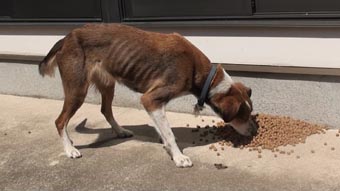 |
   |
| HOME > Action > Petition Requesting that Adequate Care be Provided for Companion Animals in the Vicinity of the Fukushima Nuclear Power Plant |
|
|
|||||||||
ALIVE
All Life In a Viable Environment
5-18-10-102, Honkomagome, Bunkyo-ku, Tokyo, 113-0021
Japan
Tel.+81-3-5978-6272
Fax..+81-3-5978-6273
![]()
Anti Vivisection Action Network
One month has passed since the March 11 earthquake that hit the northeastern part of Japan and crippled the Fukushima Daiichi Nuclear Power Plant. The plant workers’ battle to prevent a worst-case scenario is still very far from over and an extensive area around the plant has been exposed to radioactive contamination. At the press conference held today, the Japanese government announced that it would make the area currently set as a voluntarily evacuation zone into a no-entry zone. The government also said that that it would expand the evacuation zone beyond the present 20km radius. We are sending the following request and proposal letter to government bodies and officials concerning the abandoned animals and livestock in the disaster areas.
Petition Requesting that Adequate Care be Provided for Companion Animals in the Vicinity of the Fukushima Nuclear Power Plant April 11, 2011 The Director General for Disaster Management, Cabinet
Office The plan for animal rescue in disasters includes a
section concerning animal management and hygiene control. After
the Fukushima Nuclear Power Plant accident, the evacuees didn’t
expect the evacuation period to last this long, so in many cases
they have left companion animals or livestock inside the affected
areas. As they are staying at shelters for longer and longer, some
evacuees often return home to feed and check on their pets, but
others are unable to do so. The pet animals that are apart from
their owners have turned into strays. The livestock that have not
been fed are slowly dying of starvation. Once the evacuation becomes
mandatory, how we deal with companion animal issues will be of major
importance. There are also families who have taken their pets with
them to the shelters and are having difficulties there. 1. Abandoned companion
animals <Suggested Solutions> 2. Abandoned livestock There are a lot of Wagyu beef and other livestock farms in the areas near the Fukushima Daiichi Nuclear Power Plant. Some cattle were released so that they can walk around to obtain food and water, but some cattle are still chained and left in disaster areas that are also contaminated with high levels of radioactive materials. These animals are slowly dying without the freedom to move around to obtain food or water. <Suggested Solutions> 3. Pet problems at shelters Some shelters do not accept animals, so evacuees with pets have to stay in their cars or move to shelters where animals are also allowed to stay. Some public housing has been opened for the evacuees as temporary accommodation but in many cases pets are not allowed. As a result, there are families that have unwillingly given up their companion animals. Moreover, it is not certain whether pets will be accepted at the temporary housing units that are currently being constructed. . <Suggested Solutions> 4.A serious lack of manpower Some local government officials in the areas hit by Tohoku-Kanto earthquake and tsunami were also victims of the disaster. Rescuing people is the first priority, so rescuing animals tends to be put to one side. As manpower and networks are seriously lacking, when discussing measures, please include how to get more people to help improve the situation. <Suggested Solutions>
|
|

